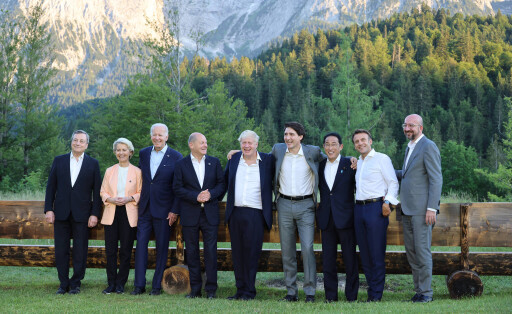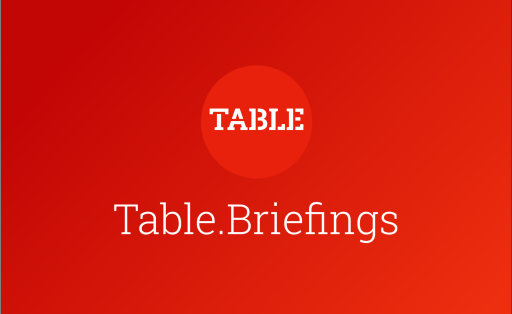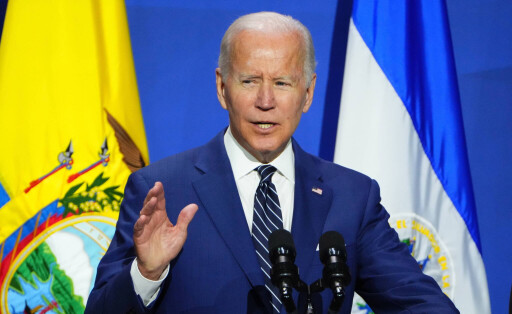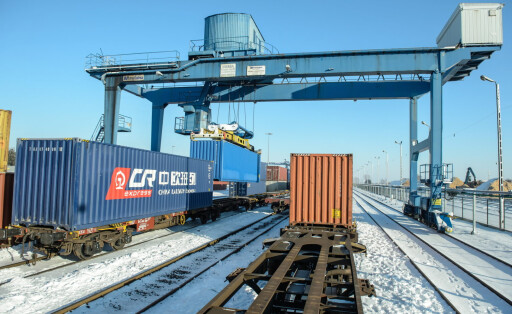The New Silk Road is a project of the People's Republic of China. The aim is to improve the land and sea routes between Europe and the Asian region. The Table.Media editorial team provides all the news on this.
Where does the name New Silk Road come from?
Officially, the project of the People's Republic of China is called One Belt, One Road. Or also Belt and Road Initiative (BRI). In the vernacular, however, the project is called the New Silk Road. It was launched in 2013. The name goes back to the German geographer Ferdinand von Richthofen. In 1877, he used it to describe the caravan routes between the Mediterranean and Central and East Asia. However, these routes were already used in ancient times. Silk was transported to the west, wool, gold and silver to the east. China has taken up this idea again. One Belt, One Road is intended to make freight traffic between Europe and China more efficient. To this end, various routes are being opened up through infrastructure measures. For example, by building ports for the sea routes and railroads and rail lines for the overland routes.
Which economic belts does the New Silk Road encompass?
The names of the project are confusing. Neither is One Belt, One Road about just one Silk Road, nor is it about just one belt. Rather, an entire network of corridors will connect a multitude of countries. There are two different projects. The new overland routes are referred to as the Economic Belt. Six corridors are to form the new Silk Road here: China - Kazakhstan - Russia - Ukraine/Belarus - Poland - Slovakia - Germany China - Kyrgyzstan - Uzbekistan - Turkmenistan - Iran - Turkey China - Mongolia - Russia China - Laos - Thailand - Malaysia - Singapore - Indonesia China - Myanmar - Bangladesh - India China - Pakistan The second project is called Maritime Silk Road. This refers to nine different corridors that form the New Silk Road sea route. China - Greece - Italy - France - Spain China - Vietnam - Singapore - Myanmar China - United Arab Emirates - Iraq China - Djibouti - Saudi Arabia - Sudan China - Philippines China - Cambodia - Thailand China - Malaysia - Pakistan - India - Sri Lanka China - Singapore - Malaysia China - Indonesia - Malaysia - Singapore - Thailand
Which countries belong to the New Silk Road?
A total of 140 countries belong to the New Silk Road. As part of the Belt and Road Initiative, China has concluded so-called Memorandums of Understanding (MoU) with them. In other words, agreements that are supposed to guarantee cooperation. In addition, China has concluded an MoU with the African Union, i.e. an entire alliance of countries. In Europe, 18 of the 27 member states have made such an agreement. Romania was the first country in 2015. Germany has not (yet) signed an MoU. While not all of the countries that have signed a corresponding MoU are located along the corridors of the New Silk Road, they are nevertheless affected by it. For example, a new railroad line is to be built in Kenya. It will connect the capital Nairobi in the heartand with the port city of Mombasa in the southeast of the country. In Djibouti, the Chinese are building a new port that will be connected by rail to Addis Ababa, the capital of Ethiopia. The country itself has no access to the sea.
How is China financing the New Silk Road?
The Belt and Road Initiative is expected to cost a total of $900 billion. China is financing the New Silk Road primarily through four elements. With the help of state-owned commercial banks, the New Silk Road Fund, the specially established Asian Infrastructure Investment Bank (AIIB) and the New Development Bank (NDB). The Belt and Road Initiative is not financed by China alone. Other countries are also providing funding. China is the largest shareholder in the Asian Infrastructure Investment Bank, with thirty percent of the equity. In addition to China and Russia, Brazil, India and South Africa also have stakes in the New Development Bank. Both banks are multilateral banks that focus on infrastructure projects.
How does the financing of the New Silk Road work?
The banks and funds mostly lend to countries that have New Silk Road infrastructure projects. A port, a bridge or a railroad line, for example. However, China takes a very restrictive approach when it comes to securing the loans. In the event of a sovereign bankruptcy, China seeks assurances that it will be the first creditor to be serviced. This has consequences in international politics. Other lenders are becoming more hesitant because they have to fear that they will not receive any payment at all in the event of an emergency. In addition, there are contractual clauses that allow China to demand immediate repayment of the money it has borrowed if the People's Republic does not agree with the policies of the partner country.
What are the benefits of China's New Silk Road?
Officially, One Belt, One Road is intended to strengthen trade links between Asia and Europe. The economic development of many regions could thus be advanced and cultural exchange promoted. Tourism and healthcare projects are also planned. For the Chinese economy, the New Silk Road helps to sell overcapacities from the construction and steel industries. But the New Silk Road is also a sign of the People's Republic of China's geopolitical and global economic goals. Many critics fear that China wants to make poorer countries politically compliant and exploit the raw materials. At the expense of the local population. Environmental or social standards are only of secondary importance in the infrastructure measures of the Belt and Road Initiative.
Future of the New Silk Road
Readers can find out what the future holds for the New Silk Road from the Table.Media editorial team, which reports all the relevant news about One Belt, One Road in German.






